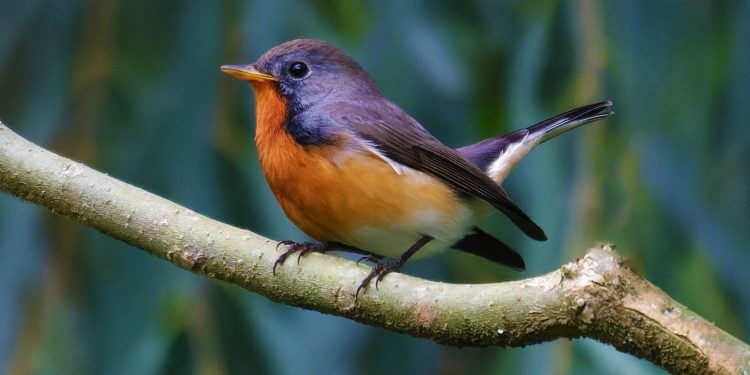The Kashmir flycatcher (Ficedulasubrubra) is a small passerine bird belonging to the Muscicapidae family. Previously considered a subspecies of the red-breasted flycatcher, it is now recognized as a distinct species. This insectivorous bird breeds in the northwestern Himalayas of the Indian Subcontinent and migrates southward to spend the winter in the hills of central Sri Lanka and the Western Ghats of India.
The Kashmir flycatcher is primarily found in deciduous forests with dense undergrowth, where it nests in tree cavities and lays 3-5 eggs. During the winter, it inhabits a variety of habitats, including gardens, tea estates, forest edges, and open areas within forests, typically at elevations above 750 meters. Its physical characteristics are similar to those of the slightly smaller red-breasted flycatcher. Males are characterized by a gray-brown back and a vibrant orange-red throat, breast, and flanks, bordered by black on the throat and breast. Females and first-winter birds exhibit a slightly browner upper body, and the red coloration on the underparts may be reduced to a pinkish wash.
The Kashmir flycatcher can be distinguished from the similar taiga flycatcher (Ficedulaalbicilla) by the extent of its reddish-orange coloration, which is limited to the throat and upper breast in the taiga flycatcher and lacks the black border. Additionally, the Kashmir flycatcher’s song is a short, melodic “sweet-eet sweet-eet-did-he,” while its call is a sharp “chak.”
The Kashmir flycatcher is classified as a vulnerable species due to its decreasing population and breeding range, which has been severely fragmented as a result of habitat loss caused by commercial timber extraction, agriculture, and livestock grazing. The estimated population is believed to be between 2,500 and 10,000 birds.
Thanks to Mr Jana and Thamizhselvan Muthulingam for making our birding trip in the Nilgirisan an unforgettable experience. Their knowledge and enthusiasm were invaluable in helping me to capture some amazing photos of this rare bird. I am truly grateful.
This Bird was photographed at Nilgiris Hills, Tamil Nadu, India
Special thanks to the CIS-A2K and Wiki Loves Birds & Wikipedia Team.



